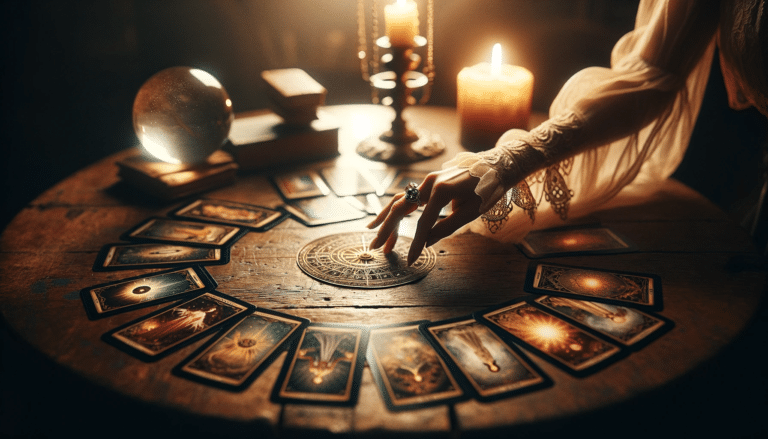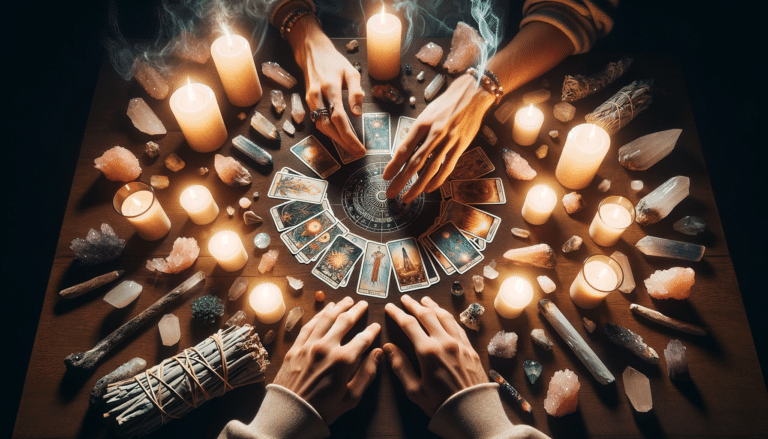Explore Tarot Card Interpretation Symbols Meanings & Mysteries
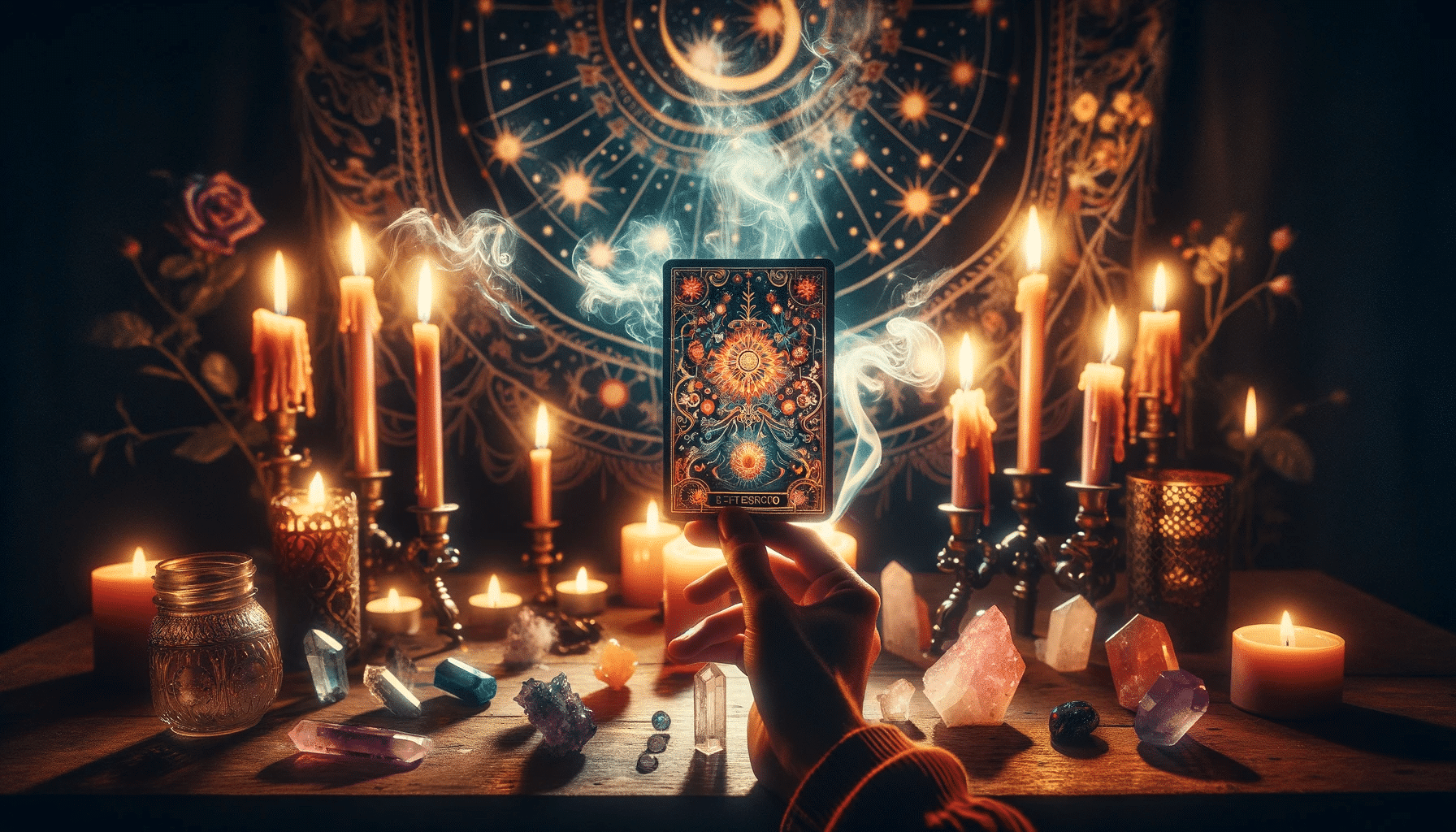
Ever wondered what the mysterious symbols on your tarot cards mean? You’re not alone! They’re steeped in centuries of symbolism and interpretation.
In this guide, we’ll help you unravel these intriguing icons. Whether you’re a novice or a seasoned tarot reader, you’ll find something to deepen your understanding.
Let’s dive into the world of tarot card interpretation symbols meanings and their mysteries, unlocking the secrets they’ve been whispering to us all along.
Your journey into the mystical begins now.
Key Takeaways
- Tarot cards are filled with intricate symbols that represent different aspects of human experience.
- Symbols used on Tarot cards can be animals, objects, colors, and figures.
- Each symbol offers a layer of meaning to the card.
- Understanding symbols in Tarot cards unlocks the wisdom of the Tarot.
The Basics of Tarot Card Symbols
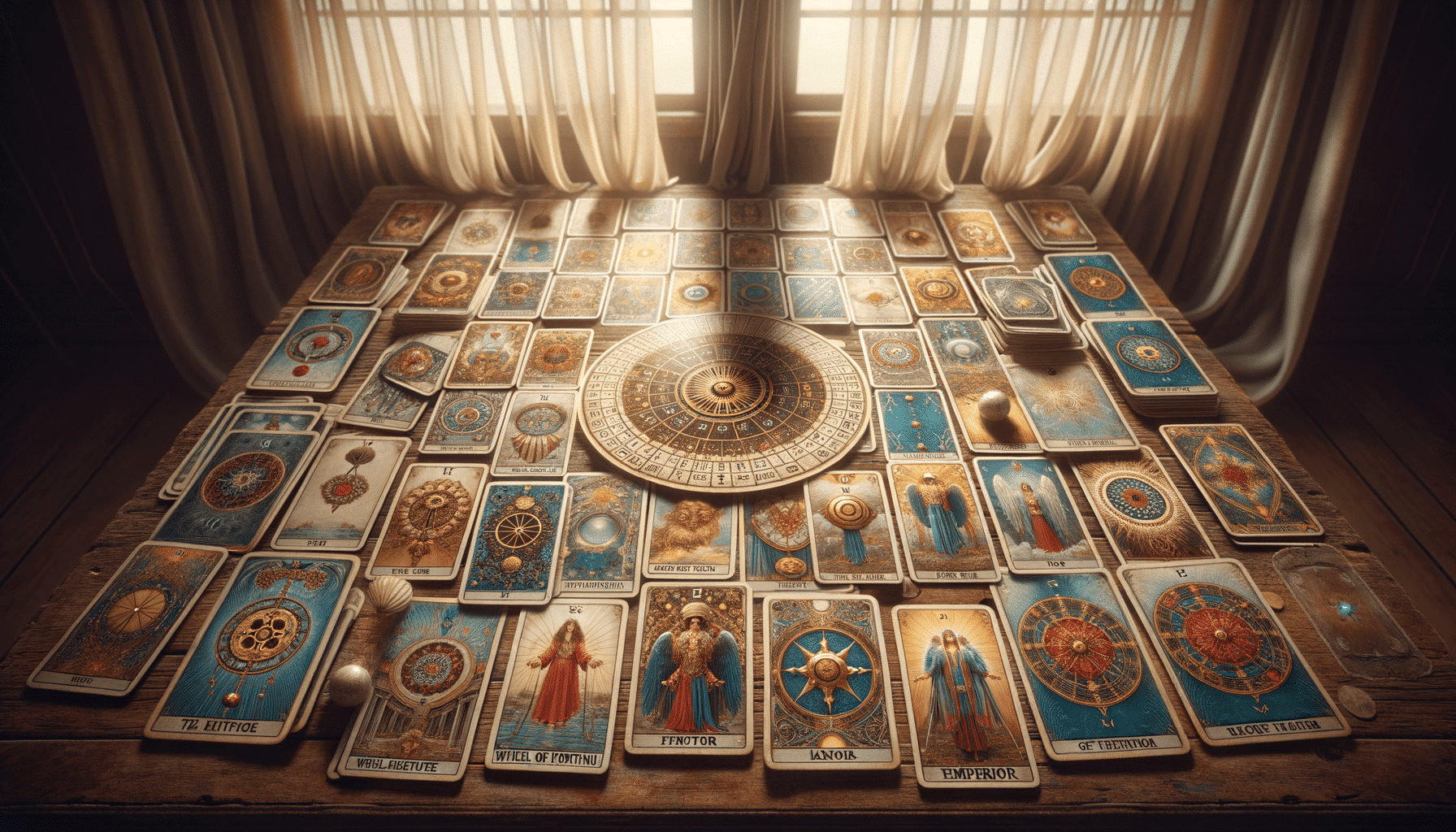
In your journey to understanding Tarot cards, it’s crucial to start with the basics of the symbols, as they’re the key to interpreting the cards’ meanings accurately. Each Tarot card is a symbolic mirror of your subconscious, filled with intricate symbols that represent different aspects of human experience.
The images on the cards aren’t random. They’re carefully chosen symbols, each carrying a unique message. The symbols used can be anything from animals, objects, colors, and figures. Each one offers a layer of meaning to the card. For instance, cups usually symbolize emotions, swords indicate conflicts, wands represent creativity, and pentacles denote material aspects.
Understanding these symbols isn’t just about memorizing their meanings. It’s about interpreting them in the context of the question asked and the position of the card in the spread. Remember, your intuitive impressions also play a significant role.
It’s a lot to take in, but don’t worry. With time and practice, you’ll find that the symbols start to speak to you, revealing the cards’ profound wisdom.
Now that you’ve grasped the basics of Tarot card symbols, let’s move on to understand the major arcana symbol meanings.
Check out our Tarot Cards here…
Major Arcana Symbol Meanings

Often, you’ll encounter 22 Major Arcana cards in a Tarot deck, each with its own unique symbols that you’ll need to understand and interpret. These symbols don’t just hold aesthetic value, they’re brimming with profound meanings and messages. The Major Arcana cards are the heart of the tarot, representing significant life events or stages, while their symbols provide deeper insight into these experiences.
To help you get started, here’s a table breaking down the symbols of three Major Arcana cards:
| Card | Symbol | Meaning |
|---|---|---|
| The Fool | Mountain | A symbol of challenges |
| The Magician | Infinity sign | Represents infinite possibilities |
| The High Priestess | Moon | Symbolizes intuition |
By interpreting these symbols, you can unlock the wisdom of the Tarot, providing guidance and insight into life’s many turns and trials. Remember, the symbols aren’t just pictures, they’re visual keys to understanding the messages of the universe.
Now that you’ve had a taste of the Major Arcana symbols, it’s time to delve deeper into understanding the symbols of the Minor Arcana. These symbols might seem less significant, but they hold just as much depth and potential for insight.
Learn about more Tarot Basics here…
Understanding Minor Arcana Symbols
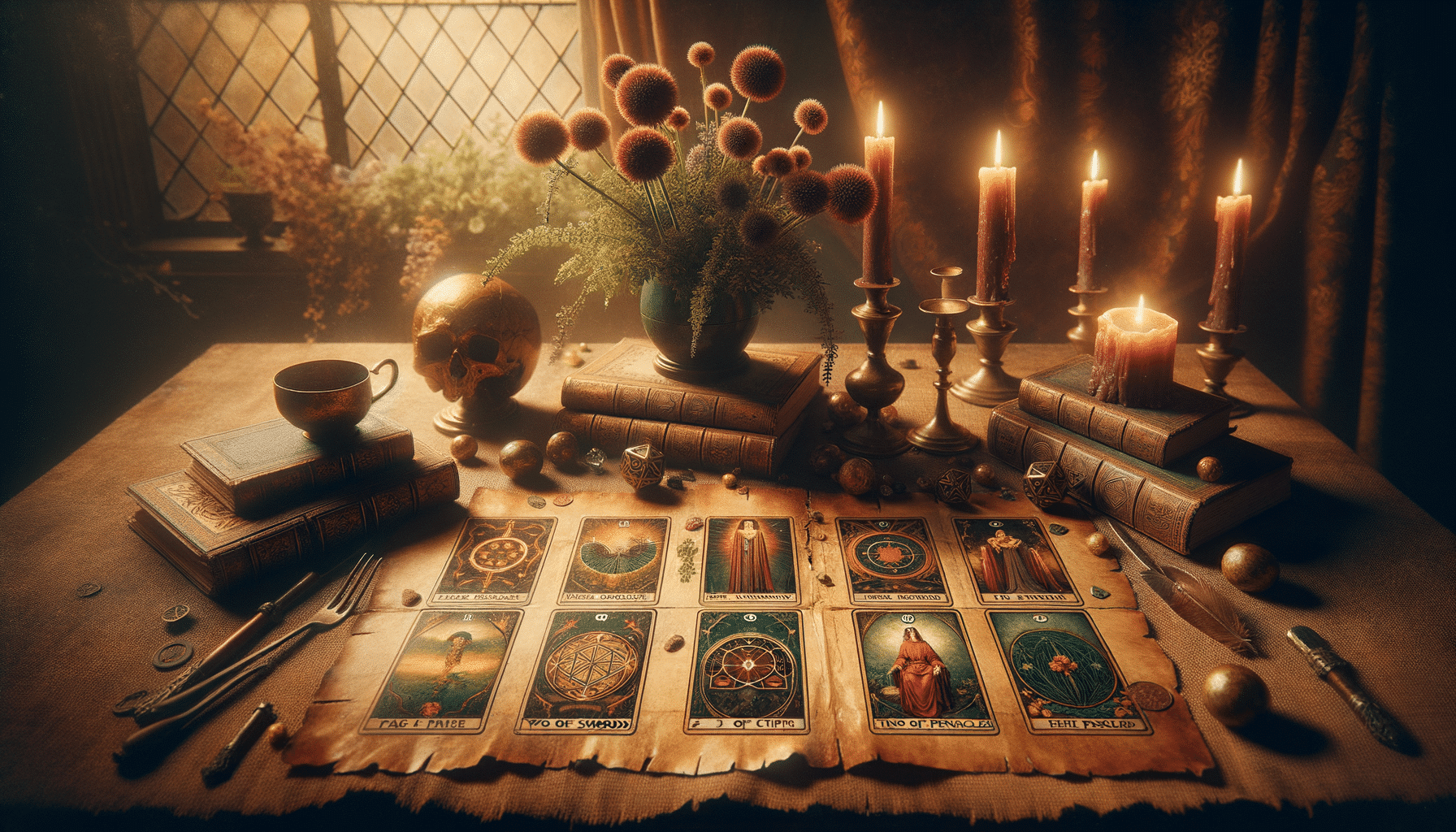
Now, let’s delve into the symbols of the Minor Arcana, which offer equally deep insights into our lives. The Minor Arcana, unlike the Major Arcana, isn’t about big life events and spiritual themes. Instead, it focuses on the day-to-day happenings, our feelings, thoughts, and the actions we take.
Each suit in the Minor Arcana represents a different element. The Cups symbolize water and our emotional lives; the Swords embody air and represent our thoughts and conflicts; the Wands stand for fire and symbolize our passions and motivations; and finally, the Pentacles represent earth and deal with our material world and physical bodies.
Within each suit, the numbered cards (Ace through 10) reflect situations and events. The court cards (Page, Knight, Queen, King) symbolize people or personalities. The Aces represent new beginnings, the middle numbers indicate progress and development, while the tens suggest completion or endings.
By understanding these symbols, you’ll be able to interpret the Minor Arcana cards accurately. They help you to get a fuller picture of your life and provide guidance on how to navigate daily situations.
Learn even more secrets of Tarot Interpretation here…
Interpreting Court Card Symbols

Delving deeper into the realm of symbolism, let’s explore how to interpret the court card symbols in the Minor Arcana, as these represent specific personalities or people in your life. The court cards, which include the King, Queen, Knight, and Page, each carry their own significant meanings.
To make this easier, consider the table below:
| Court Card | Meaning |
|---|---|
| King | Authority, power, respect |
| Queen | Intuition, understanding, patience |
| Knight | Energy, action, adventure |
| Page | Curiosity, new beginnings, potential |
When these cards appear in your reading, they can represent either you or someone else who has a significant impact on your situation. For example, if you pull the Queen, it may indicate the need to trust your intuition or the presence of a nurturing figure in your life. Similarly, the Knight might suggest a time of action and adventure or point to a person with those characteristics.
Symbolism in Tarot Card Colors

Continuing from your exploration of court card symbols, let’s shift our focus to the symbolism embedded in the colors of the tarot cards. Each hue carries a distinct meaning, significantly influencing the overall interpretation of a reading.
Red, for instance, symbolizes passion, energy, and power. It’s common in cards that concern love or conflict.
Blue, on the other hand, denotes wisdom and tranquility. It’s often found in cards related to spiritual growth or peace.
Green, representing growth, abundance, and nature, is prominent in cards about prosperity or health.
Black and white have clear contrasts. Black is the color of mystery, the unknown, and sometimes negativity, while white signifies purity, truth, and enlightenment. These colors often appear in cards dealing with life’s major transitions or revelations.
Yellow, the color of intellect and creativity, is abundant in cards concerning mental activities.
Lastly, purple, a color associated with intuition and the spiritual realm, is frequently seen in cards revolving around psychic abilities or spiritual awareness.
Now that you’re familiar with color symbolism, you’re better equipped to understand the deeper layers of tarot cards. Next, we’ll delve into the significance of numerology in tarot interpretations.
Numerology in Tarot Interpretations

In your journey to understand tarot cards, it’s essential to consider the role of numerology in their interpretation. Numerology, akin to the symbolism in colors, adds a deeper layer of meaning to the cards. It’s a language of numbers, each carrying a unique vibration and significance.
Each number from 0 to 10 has a particular meaning:
– Zero: Symbolizes potential and choice.
– One: Represents beginnings, unity, and individuality.
– Two: Suggests balance, duality, and harmony.
– Three: Denotes creativity, expression, and growth.
The higher numbers (11-22) are associated with the Major Arcana cards. They’re connected with universal spiritual laws.
– Eleven: Symbolizes spiritual enlightenment.
– Twenty-Two: Represents the end of the tarot deck and signifies completion and fulfillment.
To understand the full message of a tarot reading, you need to interpret both the imagery of the cards and their numerical significance. It’s about piecing together the different elements to form a comprehensive picture.
Don’t rush the process; rather, take your time to delve into the numerological aspects of each card. Trust your intuition and let the numbers guide you. In the end, you’ll find that numerology can provide remarkable insights into your tarot readings.
Tarot Symbols in Different Cultures
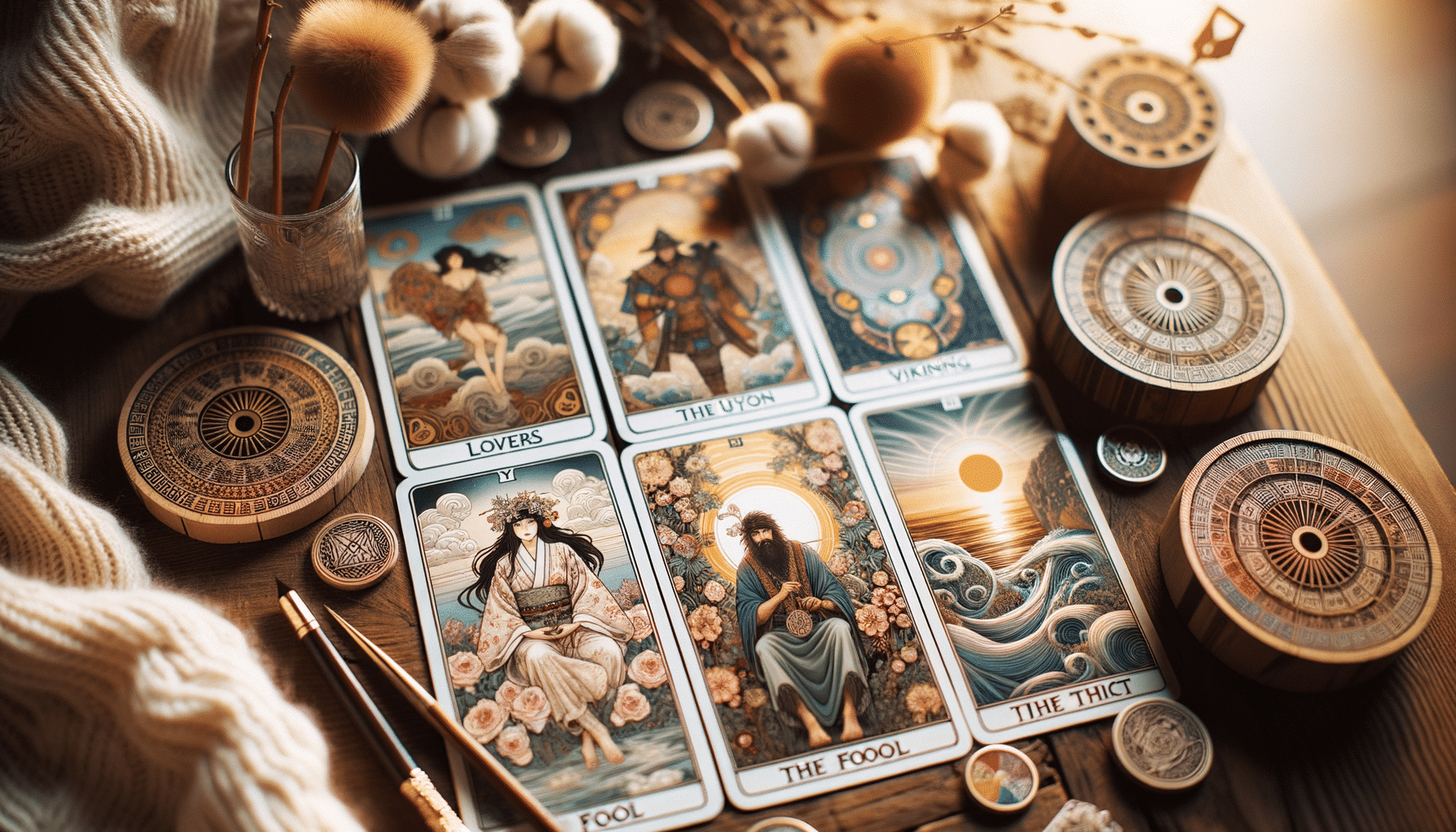
You’ll find that numerous cultures around the world have influenced tarot symbolism, each adding unique layers of meaning to the cards. For instance, the Rider-Waite deck, one of the most popular, was heavily influenced by Christian symbolism. However, it also incorporates elements from ancient Egypt and the Kabbalah.
Now, let’s take a look at the Thoth deck, designed by Aleister Crowley. This deck draws on a range of cultures, including ancient Egyptian, Greek and even Eastern philosophies. The Sun card, for example, features a large sun disk, a common symbol in ancient Egyptian culture representing creation and rebirth.
You’ll also find decks inspired by various indigenous cultures. The Vision Quest Tarot, for instance, incorporates Native American spiritual concepts and symbolism. Its Four of Earth card depicts a medicine wheel, a symbol of the cyclical nature of life and spiritual growth.
Understanding the cultural influences in a tarot deck can deepen your interpretations and enrich your readings. However, remember that the most important element in tarot reading is your intuition. Use these symbols as guides, but trust your gut when it comes to interpreting the cards.
Advanced Tarot Card Symbol Interpretation

Now, you’re ready to move onto advanced tarot card symbol interpretation. This involves decoding complex tarot symbols and applying specialized interpretation techniques.
You’ll learn how to uncover more profound meanings in the cards and build your divination skills.
Decoding Complex Tarot Symbols
Diving deeper into tarot card symbolism, you’re stepping into a world full of intricate and complex meanings that require advanced interpretation skills. This journey isn’t for the faint-hearted, it demands focus and intuition.
To help you navigate, here’s a guide on how you could tackle complex symbols:
Contextual Interpretation
- Consider the card’s position in the spread. The meaning of a symbol can change depending on whether the card is upright or reversed.
- Understand the narrative. The story between the cards can reveal deeper insights.
Intuitive Interpretation
- Trust your gut. Your first impression often holds the key.
- Use personal associations. Your unique experiences can add another layer to the interpretation.
Symbol Interpretation Techniques
As you delve into advanced tarot card symbol interpretation, it’s crucial to master a few key techniques to help you unlock the profound meanings hidden within the cards. You’ll need to engage both your intuition and your analytical skills to interpret the symbols in context, and to connect them to your own life experiences and insights.
Here’s a handy table to guide you:
| Technique | Description |
|---|---|
| Intuition | Trust your gut feelings when interpreting symbols. |
| Contextual Interpretation | Consider the other symbols and the overall theme of the card. |
| Personal Connection | Relate the symbols to your own experiences or feelings. |
| Historical Reference | Study the traditional meanings of symbols in tarot. |
| Symbol Interaction | Observe how symbols interact or relate to each other on the card. |
Frequently Asked Questions

How Can I Use Tarot Cards for Meditation or Personal Growth?
You can use tarot cards for meditation and personal growth by focusing on each card’s image. Allow the visuals to guide your thoughts and emotions. It’s a unique self-reflection tool, enhancing mindfulness and introspection.
Are There Any Online Resources to Help Learn Tarot Card Symbol Meanings More Effectively?
Sure, there’s a surplus of sites to support your study of tarot symbols. Try “Biddy Tarot” or “Labyrinthos Academy”. They offer comprehensive guides to help you harness the hidden meanings in your tarot deck.
Can Tarot Card Readings Predict the Exact Timing of Future Events?
No, tarot cards can’t predict exact timing of future events. They’re tools for guidance, personal growth, and self-reflection, not specific timelines. They provide insights into potential outcomes, but nothing’s set in stone.
What Are the Ethical Guidelines to Follow While Giving a Tarot Card Reading?
When giving a tarot reading, you must always respect the client’s privacy, avoid making harmful predictions, and remember you’re not a licensed counselor. It’s vital to maintain an ethical, responsible approach throughout.
Do Tarot Cards Have Any Connection With Religious or Spiritual Beliefs?
Yes, tarot cards often intertwine with spiritual beliefs. They’re not tied to any one religion, but the symbols can connect to various spiritual concepts. It’s about interpreting these symbols in a way that resonates with you.
Conclusion
Just like in life, every symbol in a tarot card carries a unique story, waiting to be unveiled. Think of it as a jigsaw puzzle – the more pieces you connect, the clearer the picture becomes.
It’s not about memorizing each card’s meaning, but rather understanding their subtle nuances and connections.
So next time you pull out a tarot deck, remember it’s not just a game of chance, but a journey of self-discovery and enlightenment.
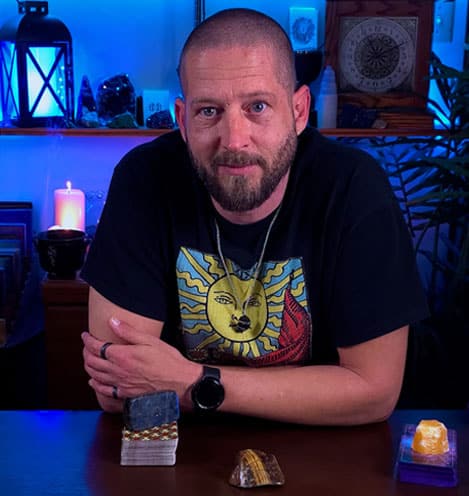
About The Author – Allen Hill
Allen Hill, the force behind Unknown Truth Tarot, has a YouTube following 6-times bigger than the population of his hometown, Miamisburg, Ohio. From his spiritually rich blog on Tarot and crystals to his role as CEO of The Unknown Truth Tarot Metaphysical Shop, Allen’s passion for the metaphysical shines through.
A master Tarot reader and “crystal junkie,” Allen is also a devoted dad to Dylan, 10, and Destiny, 24. When he’s not immersed in the world of Tarot and crystals, he enjoys poker and video gaming sessions, often humorously outplayed by Dylan.
Follow Allen on Twitter, Instagram, Facebook, TikTok, and subscribe to his Unknown Truth Tarot YouTube channel to join him on a journey of spiritual growth and self-discovery.



